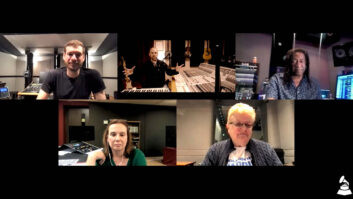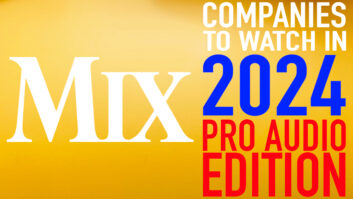HOLLYWOOD, CA—At the beginning of June, representatives from Universal Music Group, The Recording Academy’s Producers & Engineers Wing and Sony Electronics convened at Capitol Studios to make a case for Hi-Res Audio to a room full of trade and consumer media journalists. More than 15 years after the launch of Apple’s iTunes and the subsequent trumping of audio quality by convenience and quantity, are consumers ready to buck that trend?
The Hi-Res Symposium, sponsored by DEG: The Digital Entertainment Group and held in Capitol’s historic Studio A, got underway with Don Was, producer, musician and president of Blue Note Records, advocating for the format. “I’ve been a big proponent of Hi-Res Audio ever since I took the gig here at Blue Note about five years ago,” said Was, who launched an initiative to remaster the label’s catalog.
Was recalled his love for Wayne Shorter’s Speak No Evil album, a 1966 Blue Note release, and its ability to see him through tough times while he was in college. “So when it came time to remaster this album in a high-res format, the goal wasn’t to blow people’s minds with how many high frequencies we could get through your tweeters, or to make your subwoofers rumble with bass. [T]he goal was how we could use this technology to make sure people can get that emotional impact, so that they can find a way to make sense out of their lives,” he said.
“We got the original vinyl and tried to match the feel with the compression and the EQ that Rudy [Van Gelder, who recorded the album in his studio] put into the mastering. But we also got to take advantage of what hi-res offers, in terms of getting more depth in the mixes.”
Marc Finer, DEG senior director, rhetorically asked the $64,000 question: “What’s the business strategy for all of this? Is this really something for the industry as a whole to focus on, and to take music further, into this decade and beyond?”
There is now an entire ecosystem of digital file formats available to consumers, observed Finer. “There’s just one problem: We’ve gone 180 degrees in fidelity; we now have primarily convenience driving the market.”
As Finer noted, a number of surveys over the past few years offer some answers. A study conducted by the Consumer Technology Association (CTA) a few years ago opened some eyes, Finer’s included. “Ninety percent of consumers said sound quality is the most important factor; it affects how they listen, when they listen. Sixty percent of those listeners said they would be willing to pay more if they could experience better sound. A lot of people were shocked by this; I know I was,” he said.
Subsequent surveys by the CTA and MusicWatch identified two groups prepared to pay for premium quality music. “Besides the tastemakers, the audiophiles, there’s another group—the passion fans, largely millennials. They buy music because they care about the artist.”
After the ability to stream music anywhere, on demand, the second biggest request from respondents was “sound quality as good as the studio recording,” he said. These consumers are already paying to attend live music events, in some cases in record numbers, and have embraced the more visceral experience of vinyl.
The three major music companies have responded to that potentially lucrative market, he said. “To date, there are more than 10,000 [hi-res releases] available from all of the music companies and labels combined. They’re licensing digital service providers—we have roughly a dozen in North America.”
Hi-Res Audio, as defined by the entities represented at the symposium, sets 48 kHz/20 bits as its minimum resolution. The labels are doing their part to build their hi-res catalogs. “Our requirements now are for artists and producers to submit in hi-res,” reported Jim Belcher, VP, Technology & Production at Universal Music Group, during a brief panel discussion. “The last I checked, in April, we had probably over 7,000 albums in hi-res.”
Maureen Droney, managing director of The Recording Academy’s Producers & Engineers Wing, also on the panel, revealed that there are some hi-res audio guidelines in the works for its 6,500 members. Previously, P&E Wing members had reported problems with incompatible software and other challenges, she said. “But I think it’s becoming a simpler set [of guidelines] than a year ago when we started this process. Now they’re saying everyone should be recording in hi-res, at 96k, 24 bit. There’s much more acceptance now and the problems have in large part gone away, in terms of storage, incompatible files, etcetera.”
Meridian Audio’s proprietary MQA (Master Quality Audio) is being evaluated by many, and has been adopted by some, for use in the music delivery chain. “It’s a technique for folding down Hi-Res Audio into a file that can be transmitted over lower bandwidths. It has some unique features, like the ability to remove some of the artifacts that have accumulated in the digital file based on hardware in the past,” said Nate Albert, executive VP, A&R at Capitol Records. “We’ve been evaluating it for over a year.”
“We’re interested in any and all technologies that can bring better audio to listeners,” added Droney.
Recording Academy Producers & Engineers Wing
producersandengineers.com







